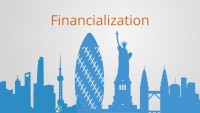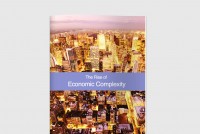Age Of Transition: Explained
At the turn of the 21st century our global economy is in both a rapid and fundamental process of change. This change is most often understood as a transformation from an industrial form of economic organization to a post-industrial form as the global economy shifts from being dominated by tangible agricultural and industrial production to becoming based around intangible services, information and knowledge. After thousands of years of agriculture and industry dominating the economy within the space of a few decades services have come to dominate now making approximately two-thirds of the global economy.
Not only is the stuff that our economies process changing fast but also its structure is evolving. Industrial age institutional infrastructure based around the nation state is evolving into a more complex form based around global networks of information and goods exchange, as information networks reshape our socio-economic systems of organization on all levels. A shift from static, centralized organizations based around physical components within closed boundaries to, dynamic, distributed systems based around processes and connectivity within open networks. Within the space of just a generation the global economy is going through this evolution in its structure from a more elementary form to a more complex form, with profound consequences. It is this period of rapid evolutionary transformation to the deep structure and architecture of our global economy that we call the Age of Transition.










